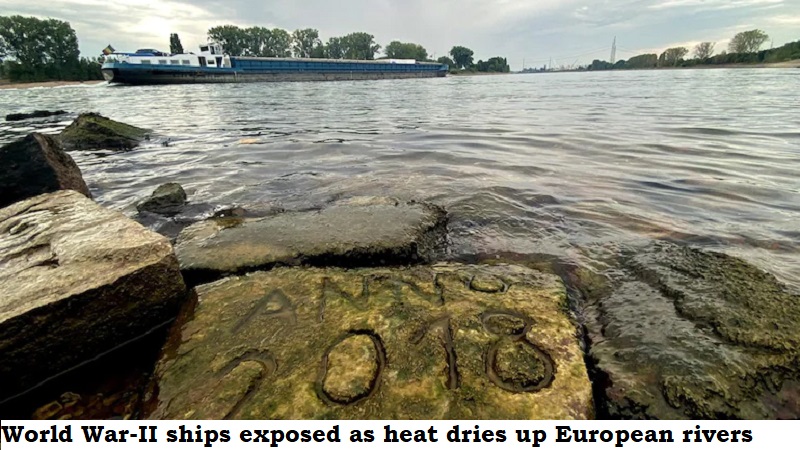
Water levels in rivers and lakes around Europe have dropped to very low levels due to weeks of sweltering drought, revealing long-hidden riches as well as some unwelcome dangers.
Archaeologists have been thrilled by the discovery of a prehistoric stone circle known as the ‘Spanish Stonehenge’ that is often covered by the waters of a dam in Spain, which is experiencing its worst drought in decades.
The stone circle, officially known as the Dolmen of Guadalperal, is today completely exposed in a corner of the Valdecanas reservoir in the central province of Caceres, where officials claim the water level has fallen to 28% of its maximum level.
It was discovered by German archaeologist Hugo Obermaier in 1926, but the area was flooded in 1963 in a rural development project under Francisco Franco’s dictatorship. Since then it has only become fully visible four times.
Germany’s return of so-called ‘hunger stones’ along the Rhine has also resurrected memories of previous droughts. Along the banks of Germany’s greatest river, many of these stones have recently come into view.
The drought has caused another of Europe’s great rivers, the Danube, to drop to one of its lowest levels in nearly a century, exposing the wrecks of more than 20 German warships that were sunk during World War II close to Serbia’s river port city of Prahovo.

Post Your Comments